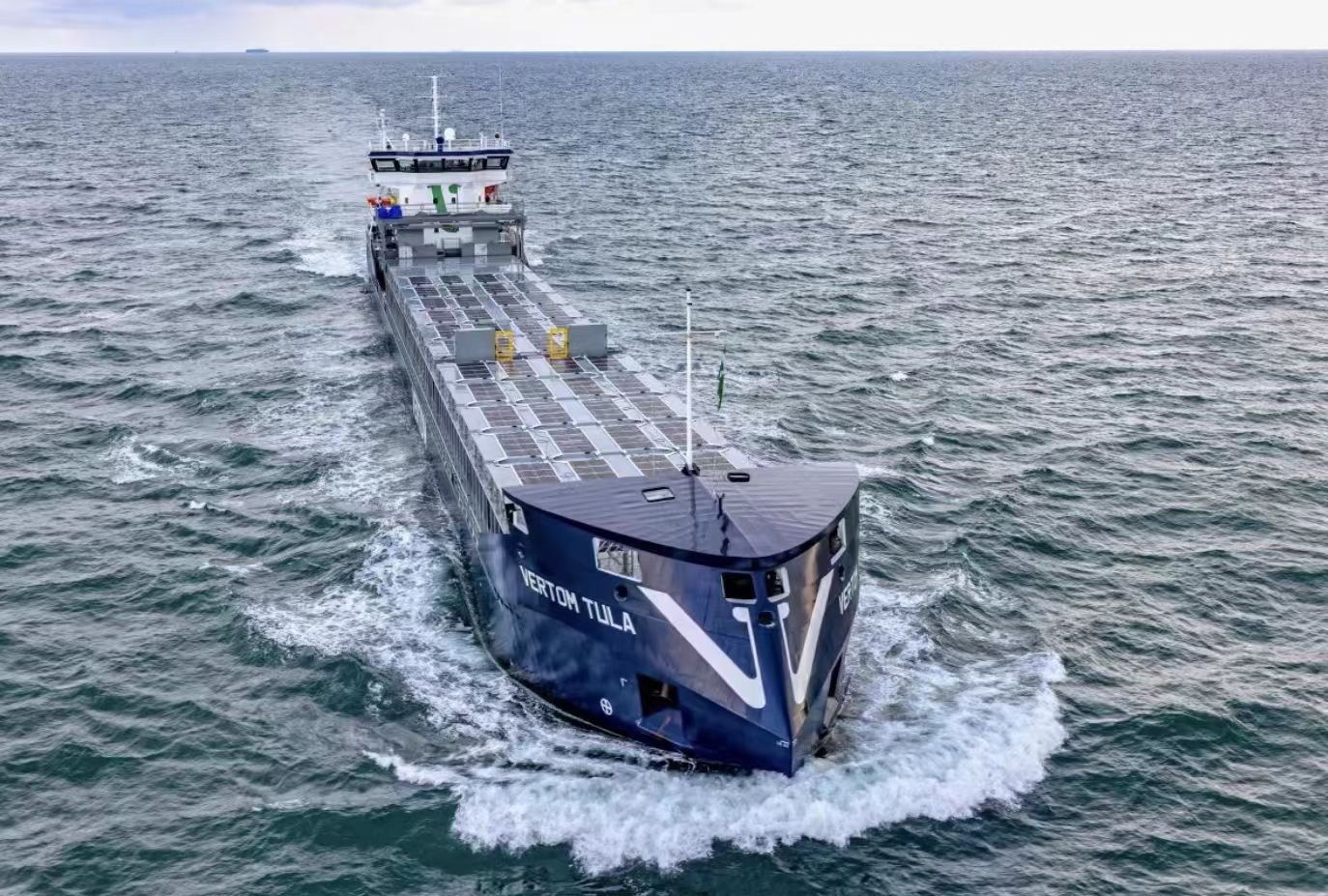韩国智能船舶研发新动向
作者: 发布时间:2020年09月14日 浏览量:2480 字体大小: A+ A-

图片来自网络,版权属于原作者
来源:Hellenic Shipping News 2020-09-14
翻译:国际海事信息网 黄子倩 张运鸿
近期,韩国国内造船厂在发展生态友好型和燃料节约型智能船舶上的竞争日趋激烈。
造船业和全球市场研究机构Acute Market Sports在9月9日表示,无人船及相关设备、材料的市场预计每年增长12.8%,2025年市场总额可达到1550亿美元。在此前景下,韩国国内的主要造船厂都聚焦于智能船舶的发展,以立市场潮头。
现代重工(Hyundai Heavy Industries, HHI)于2011年3月建造了世界首艘智能船舶。通过卫星,其智能导航系统可使航运公司监测、远程诊断并控制船舶操作情况。目前现代重工所承接的智能船舶年订单数达到400艘,并在加速研发新型智能船舶。2017年,现代重工基于物联网技术(IoT technology)发明了综合智能船舶解决方案(Integrated Smart Ship Solution, ISS)。
今年上半年,现代重工在SK航运旗下一艘25万吨级散货船上安装了“HiNAS”(Hyundai Intelligent Navigation Assistant System, 现代智能导航辅助系统),成为世界上首个在大型服役船舶上应用智能航行核心技术的造船厂。
HiNAS通过人工智能(AI)的摄像头分析,自动识别周围的船只,基于增强现实(AR)技术,确定并警示碰撞风险。这种先进的导航支持系统尤为引人注意的一点在于,即使在夜间能见度有限或有海雾的情况下,它也可以利用红外摄像机分析并提供全面的信息,如障碍物的位置和速度。
今年,现代重工自行研发了HiMSEN发动机。这款引擎搭载了人工智能(AI)、大数据和物联网等尖端技术,有望每年节省数十亿韩元的燃料成本,或降低10%的成本。
大宇造船 (DSME)也计划利用无碳和智能技术开发高效船舶。它已经向现代商船(HMM)交付了一艘基于本公司平台——智能船4.0而开发的智能船舶。此外,大宇造船还在不断升级导航环境测量、维护维修、安全导航等技术,以实现自主导航。
大宇造船计划开发一种数字孪生船舶(digital twin ships),可以提前探测到航行中的危险情况;一种轴向发电马达系统,它可以在航行中通过旋转轮船引擎的轴向来发电;还有一种空气润滑系统,它可以利用空气来减少阻力。大宇造船希望这些技术能降低燃料成本。
三星重工则专注于开发环保技术以节省燃料。例如空气润滑系统(air lubrication system),这是一种节能装置(ESDs)。特别值得一提的是,该公司在LNG船上安装了自己的空气润滑系统“SAVER air”,将其能耗降低了5%。此外,通过应用SAVER Stator-D,一种通过平衡流入螺旋桨的海水来增加螺旋桨功率的节油装置,燃油效率提升了大约3%。
(本文版权归国际海事信息网所有,图片版权归原作者,转载请注明出处。)
Korean Shipbuilders in Competition to Develop Eco-friendly and Fuel-saving Smart Ships
Recently, competition is heating up among domestic shipbuilders to develop eco-friendly and fuel-saving smart vessels.
The market for autonomous ships and related equipment and materials is expected to grow 12.8 percent annually to reach US$155 billion in 2025, said Acute Market Sports, a shipbuilding and global market research firm on Sept. 9. Against this backdrop, major domestic shipbuilders are focusing on the development of smart ships to lead the market.
Hyundai Heavy Industries (HHI) introduced the world’s first smart ship in March 2011. Its autonomous navigation system allows a shipping company to monitor, remotely diagnose and control the operation of a vessel on land via a satellite. The number of smart ship orders amounts to 400 units a year, and the company is speeding up research and development on smart ships. In 2017, HHI developed the Integrated Smart Ship Solution (ISS) based on IoT technology.
In the first half of this year, the company installed “HiNAS” (Hyundai Intelligent Navigation Assistant System) on SK Shipping’s 250,000-ton bulk carrier, becoming the world’s first shipbuilder to apply a core technology for autonomous sailing to a large ship already in service.
HiNAS automatically recognizes surrounding vessels through camera analysis via artificial intelligence (AI) to determine and alert the risk of collision based on augmented reality (AR). Particularly noteworthy about this advanced navigation support system is that even when visibility is limited at night or by sea fog, it can analyze and provide comprehensive information, such as the location and speed of obstacles, using infrared cameras.
This year, HHI developed HiMSEN Engine on its own. The engine is loaded with cutting-edge technologies such as artificial intelligence (AI), big data, and the IoT and is expected to save billions of won in fuel costs or cut 10 percent of cost per year.
Daewoo Shipbuilding & Marine Engineering (DSME) also plans to develop high-efficiency ships by using carbon-free and smart technology. It has delivered to HMM a smart ship based on its own platform Smart Ship 4.0. Furthermore, DSME continues to upgrade technologies for navigational environment measurement, maintenance and repair and safe navigation to ultimately realize autonomous navigation.
DSME plans to develop digital twin ships that can virtually detect risks in advance, an axial power generation motor system that produces electricity by rotating the axis of a ship’s engine while sailing, and an air lubrication system that uses air to reduce resistance. It expects these technologies to cut fuel costs.
Samsung Heavy Industries is busy developing eco-friendly technology to save fuel. The case in point is an air lubrication system, one of energy saving devices (ESDs). In particular, the company applied its own air lubrication system, SAVER Air, to LNG carriers, reducing their energy use 5 percent. In addition, it improved fuel efficiency by about 3 percent by applying SAVER Stator-D, a fuel-saving device that increases propellers’ power by equalizing the flow of seawater into the propellers.
Source: BusinessKorea
来源:simic
今日要闻
图片新闻
海外传真
热点报道






